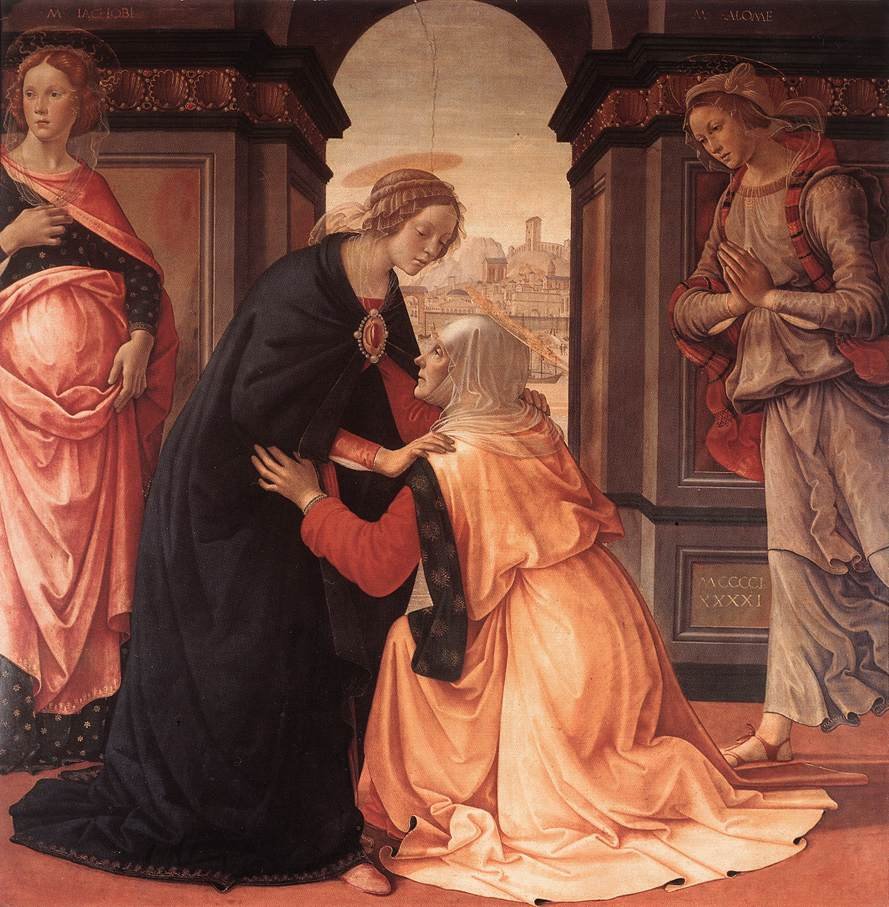Two Women, Two Covenants
If you’re familiar with the gospel story, you probably remember the scene of Mary rushing to tell her relative Elizabeth the big news: “I’m pregnant! Oh, and an angel from heaven told me that I’ve conceived by the Holy Spririt and that my child will be given the throne of David!” Big news indeed.
“In those days Mary arose and went with haste into the hill country, to a town in Judah, and she entered the house of Zechariah and greeted Elizabeth. And when Elizabeth heard the greeting of Mary, the baby leaped in her womb. And Elizabeth was filled with the Holy Spirit, and she exclaimed with a loud cry, ‘Blessed are you among women, and blessed is the fruit of your womb! And why is this granted to me that the mother of my Lord should come to me? For behold, when the sound of your greeting came to my ears, the baby in my womb leaped for joy. And blessed is she who believed that there would be a fulfillment of what was spoken to her from the Lord.’” (Luke 1:39-45)
The story has been depicted in many renaissance paintings, such as the famous La Visitazione by Domenico Ghirlandaio in which Mary looks more like an aristocrat from 15th century Italy than a poor Jewish girl from 1st century Palestine. But there is more to this episode than two women sharing in the joy of a pregnancy announcement. Luke records this event because it signals a great turning point in history. It anticipates the transition from the old covenant to the new. While this scene is not an allegory, Elizabeth nevertheless represents the old covenant. She is old (1.7: “advanced in years”), yet her once barren womb now carried the last of the old covenant prophets: John the Baptist. He would be the last in a long line of voices crying in the wilderness, “Prepare the way of the Lord.”
Mary, on the other hand, represents the new covenant. She is very young and in her womb was the promised Messiah to whom John the Baptist pointed. In Elizabeth’s womb was an old covenant prophet who would “turn many of the children of Israel to the Lord their God” (1.16). But in Mary’s womb was the Lord their God. In Elizabeth’s womb was a prophet who would not drink wine or strong drink. In Mary’s womb was One who would change water into wine and announce the arrival of the kingdom of God. In Elizabeth’s womb was a prophet who would proclaim the Mosaic law. In Mary’s womb was the One who would fulfill that law by his obedience and death, bringing eternal life to all those who trust in him. “He is the mediator of a new covenant, so that those who are called may receive the promised eternal inheritance, since a death has occurred that redeems them from the transgressions committed under the old covenant” (Heb 9.15).
The fullness of time had come. The Messiah had entered the world in the womb of a virgin. The new covenant comes to the old, and the old submits to the new with joy! “But as it is, Christ has obtained a ministry that is as much more excellent than the old as the covenant he mediates is better, since it is enacted on better promises” (Heb 8.6).
Like Elizabeth, we too are greeted with good news – the gospel announcement that there is a Mediator available for us, One who reconciles sinners to God through his life, death, and resurrection. Like Elizabeth, we too rejoice and worship the fruit of Mary’s womb: “Jesus, the mediator of a new covenant” (Heb 12.24).

